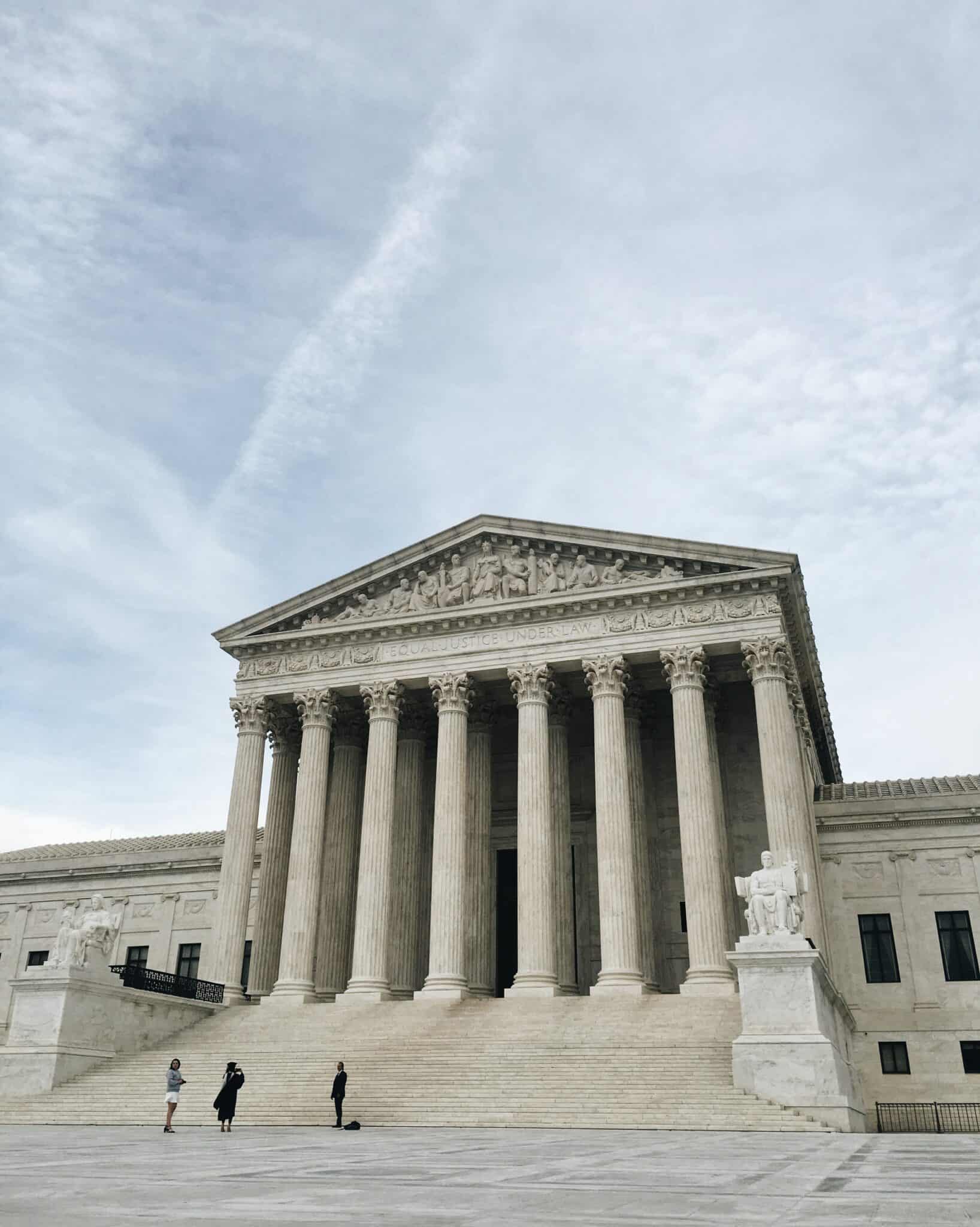
Benjamin Sachs is the Kestnbaum Professor of Labor and Industry at Harvard Law School and a leading expert in the field of labor law and labor relations. He is also faculty director of the Center for Labor and a Just Economy. Professor Sachs teaches courses in labor law, employment law, and law and social change, and his writing focuses on union organizing and unions in American politics. Prior to joining the Harvard faculty in 2008, Professor Sachs was the Joseph Goldstein Fellow at Yale Law School. From 2002-2006, he served as Assistant General Counsel of the Service Employees International Union (SEIU) in Washington, D.C. Professor Sachs graduated from Yale Law School in 1998, and served as a judicial law clerk to the Honorable Stephen Reinhardt of the United States Court of Appeals for the Ninth Circuit. His writing has appeared in the Harvard Law Review, the Yale Law Journal, the Columbia Law Review, the New York Times and elsewhere. Professor Sachs received the Yale Law School teaching award in 2007 and in 2013 received the Sacks-Freund Award for Teaching Excellence at Harvard Law School. He can be reached at [email protected].

Sharon Block is a Professor of Practice and the Executive Director of the Center for Labor and a Just Economy at Harvard Law School.
Love it or hate it, a strict preemption regime has defined U.S. labor law for decades. In 1953, shortly after Archibald Cox laid out the argument for “a rule of total federal preemption,” the Supreme Court explained that:
Congress did not merely lay down a substantive rule of law to be enforced by any tribunal competent to apply law generally to the parties. . . . Congress evidently considered that centralized administration of specially designed procedures was necessary to obtain uniform application of its substantive rules and to avoid these diversities and conflicts likely to result from a variety of local procedures and attitudes toward labor controversies.
Then, the next year, in San Diego Building Trades Council v. Garmon, the Court established the sweeping rule that any conduct even arguably protected by § 7 or prohibited by § 8 of the NLRA was not subject to state adjudication or remedies. Accordingly, employee activity protected (or arguably protected) by § 7 — including, for example, employee participation in union organizing or strike activity — is off limits to state or local intervention. So, too, for example, is employer speech about unionization, which enjoys protection under § 8(c) of the statute. Similarly, because collective bargaining is both protected by § 7 and policed by § 8’s unfair labor practice clauses, bargaining rules and obligations of both unions and employers are beyond the reach of state and local law.
Love it or hate it, the broad, Court-created preemption regime that has defined labor law since the 1950s at least has a basic symmetry, a basic good-for-the-goose-good-for-the-gander fairness: just as states can’t interfere in union organizing or labor-management relations to boost union strength, they can’t weigh in on the side of management either.
There is a narrow exception to this symmetry that came from an (until now) narrow exception to the Garmon rule. After establishing the arguably protected or prohibited preemption framework, the Garmon Court went on to hold that, if the conduct at issue is “a merely peripheral concern of the [NLRA],” or if it “touch[es] interests . . . deeply rooted in local feeling and responsibility,” the Court will “not infer that Congress had deprived the States of the power to act.” Very few decisions have found that state action escapes preemption under the “local feeling” (also known as the “local concern”) exception; the few that have generally involve violence. Although the “local feeling” exception applies formally to both union and management conduct, since it is workers and unions who are generally accused of violence (when employers deprive working people of the wages they need to survive, that doesn’t count), it is worker and union activity that is subject to state regulation under the exception.
The Supreme Court’s grant of certiorari in Glacier Northwest, Inc. v. International Brotherhood of Teamsters, Local 174 should be understood in this light. As Anita explained recently, the case involves a state tort action brought by an employer against a union for alleged intentional destruction of the employer’s property during a strike. According to the employer, when the striking truck drivers walked off the job, the concrete in their trucks hardened and became unusable. Never mind that each of the strikers drove their truck back to the employer’s plant and left the concrete mixers running in order to allow Glacier time to remove the concrete before it hardened. According to the employer, the strike actions nonetheless constituted intentional destruction of property. And, according to the employer, this kind of property destruction is subject to state court jurisdiction for two reasons: (1) it is not even arguably protected by § 7, and (2) it falls within the Garmon exception for matters of “local feeling” and is therefore not preempted by federal law. Put simply, the employer’s view is that damage to employer property occasioned by a strike is regulable by states for the same reason that criminal violence incident to a strike is regulable by states.
The employers’ argument is wrong, as a matter of existing law, for several reasons — all of which are explained clearly and persuasively by the Washington Supreme Court. As to the argument that the employees’ strike was not even arguably protected by § 7, the state supreme court explained the relevant Board rule that strikes are protected activity even when they inflict economic costs on employers, but that “employees must take reasonable precautions to protect the employer’s plant, equipment, or products from foreseeable imminent danger due to sudden cessation of work.” Because the employees arguably took such precautions here — returning their trucks to the employer’s plant and leaving the mixers running — the strike was at least arguably protected.
As to the argument that the strike activity nonetheless fell within the “local feeling” exception to Garmon preemption, the Washington court held as follows:
The [employer’s] claim would be stronger if Glacier’s trucks or facilities had been intentionally destroyed. But the incidental destruction of products during a strike, as opposed to property damage for its own sake, has not been sufficient to invoke the “local feeling” exception in any United States Supreme Court case. If viewed as product damage incidental to a strike, the driver’s conduct is closely tethered to the exercise of their § 7 rights and, at the same time, is attenuated from the State’s general interest in regulating violent conduct, such as vandalism, which is the core concern of the “local feeling” exception.
That the employer’s arguments are wrong as a matter of existing doctrine may, unfortunately, soon be beside the point. Assuming the Supreme Court did not grant cert to affirm the Washington Supreme Court, the union can expect to lose in one of two ways (or in both ways). The first is a Supreme Court holding that some set of economic costs flowing from a strike — say, those costs that can be categorized as intentional destruction of employer property — are not arguably protected by § 7 and thus subject to state tort actions. The second is a Supreme Court ruling that when the economic costs of a strike can be categorized as intentional destruction of employer property then the strike falls within the “local feeling” exception to Garmon and is subject to state tort action.
Whichever course the Court takes — or if it takes both courses — the effect will be to relax the preemption rules in a manner that frees states to tilt the balance of labor law in one direction only: namely, in favor of employers. This is because, under either approach, the exception to federal preemption that the Court would create would grant states the right to assign tort liability for property destruction during strikes, and it is only workers and unions who face allegations of property damage during strikes.
Moreover, to state the obvious, granting to states the discretion to make strikes tortious would not amount to a minor incursion into federal labor policy; to the contrary, it could do profound damage to unions’ primary tool in the fight for working people. It could open the door to tort actions not just for physical damage but also for economic damage — if arguably intentional, such as a strike timed to ensure the loss of a lucrative contract for the company. Just requiring unions to expend resources to defend against these tort suits would deplete already-stressed union resources. All while employers are free to commit “economic violence” against employees with only the threat of the NLRA’s paltry equitable damages hanging over their heads.
The asymmetric preemption regime likely to emerge from Glacier — one in which states can intervene on behalf of employers but not unions — should matter both to the labor movement and to Congress. In brief, against a Court-imposed baseline of an asymmetric preemption regime that favors employers, unions and their allies should fight for a broader — and hence more symmetric — relaxation of preemption rules.
For the labor movement, the question of preemption reform has been deeply divisive in recent years: some favor relaxed preemption rules on the ground that the harm red states would do to union rights would be offset by letting progressive states enact union-friendly reforms; others oppose relaxing preemption rules on the ground that the damage done in red states would be unacceptable, regardless of what happened in blue ones. Both positions assume, however, symmetry: that whatever preemption regime we have — the current robust one, or a reformed relaxed one — would be equally permissive (or restrictive) of pro and anti-union state action. When the Court effectively allows states to intervene on behalf of employers, but not unions, however, the baseline changes and so too must the analysis. Opposing broader preemption reform against a baseline in which states can act on behalf of employers but not unions amounts to surrendering the field of state policy to employer-favorable legislatures. Why would any union advocate want a preemption regime that empowers pro-employer state action but leaves pro-union state action off limits?
Congress should take note, and is more likely to do so if confronted with a unified labor movement position on the question. If the Court is going to construct ways of empowering pro-employer state legislatures, Congress should ensure that pro-union states have an equal amount of discretion to support union organizing, collective bargaining, and collective worker activism. In the Clean Slate report, we offered one way forward for such union-empowering preemption reform, one in which the employee rights of federal labor law are treated as a floor and experimentation at the state and local level is permitted, provided that such experimentation expands or better protects the right to engage in collective bargaining and concerted activity. Whatever shape such Congressional action takes, however, we should be united in demanding that Glacier not be the last word on federal preemption reform.









Daily News & Commentary
Start your day with our roundup of the latest labor developments. See all
December 22
Worker-friendly legislation enacted in New York; UW Professor wins free speech case; Trucking company ordered to pay $23 million to Teamsters.
December 21
Argentine unions march against labor law reform; WNBA players vote to authorize a strike; and the NLRB prepares to clear its backlog.
December 19
Labor law professors file an amici curiae and the NLRB regains quorum.
December 18
New Jersey adopts disparate impact rules; Teamsters oppose railroad merger; court pauses more shutdown layoffs.
December 17
The TSA suspends a labor union representing 47,000 officers for a second time; the Trump administration seeks to recruit over 1,000 artificial intelligence experts to the federal workforce; and the New York Times reports on the tumultuous changes that U.S. labor relations has seen over the past year.
December 16
Second Circuit affirms dismissal of former collegiate athletes’ antitrust suit; UPS will invest $120 million in truck-unloading robots; Sharon Block argues there are reasons for optimism about labor’s future.